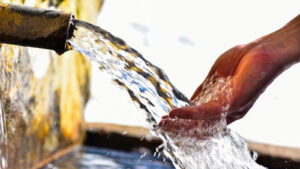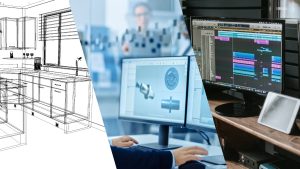Since the 1950s, water utilities all around the world have used hydraulic models for engineering and growth. A hydraulic model is a mathematical model of a fluid flow system for water that is based on physics. In most situations, the hydraulic model simulation is done in batch mode utilising historical data as input parameters. The simulation’s output offers engineering teams the best design options for selecting pipe diameters, master planning, and analysing system extensions.
In recent years, several utilities have boosted their embrace of digital technology including IoT sensors, cloud computing, and machine learning applications. These fundamental technologies serve as the foundation for transforming how we use the hydraulic model. The increased processing capacity of cloud computing makes it possible to run the model in continuous mode, and the model may be calibrated to behave like the real system with continual “pairing” of near-real-time operational data from the physical system. This is regarded as a digital twin by some.
In recent years, several utilities have boosted their embrace of digital technology including IoT sensors, cloud computing, and machine learning applications. These fundamental technologies serve as the foundation for transforming how we use the hydraulic model. The increased processing capacity of cloud computing makes it possible to run the model in continuous mode, and the model may be calibrated to behave like the real system with continual “pairing” of near-real-time operational data from the physical system. This is regarded as a digital twin by some.
What Is A Digital Twin And How Does It Work?
A digital twin is a virtual or digital depiction of a plant or system’s parts and dynamics (activity or process). If used correctly, a digital twin may affect the system’s design, construction, and operation throughout its lifespan, as well as assist optimise operations through informed insights. In other words, it’s a dynamic software model of the physical plant/system (hydraulic model + machine learning) that uses a live feed from the real system to calibrate the digital twin.
Digital twin technology is being employed in a variety of industries, including manufacturing, medical, transportation, and utilities. Then there’s the water sector. I believe the water industry has been reluctant to implement digital twins because the above-mentioned building blocks have just lately been accepted.
Hydraulic models are being used by most utilities for engineering and planning purposes. Many mathematical assumptions are utilised as inputs to the models, which are often performed in batch mode. To convert to digital twin capabilities, utilities will need to move to continuous real-time hydraulic models and calibrate the digital twin by combining data from real-time sensors, metres, SCADA, weather, and other sources.
Digital twin technology is being employed in a variety of industries, including manufacturing, medical, transportation, and utilities. Then there’s the water sector. I believe the water industry has been reluctant to implement digital twins because the above-mentioned building blocks have just lately been accepted.
Hydraulic models are being used by most utilities for engineering and planning purposes. Many mathematical assumptions are utilised as inputs to the models, which are often performed in batch mode. To convert to digital twin capabilities, utilities will need to move to continuous real-time hydraulic models and calibrate the digital twin by combining data from real-time sensors, metres, SCADA, weather, and other sources.
What Would Be The Biggest Implications On Water Utilities As A Result Of The DigitiSation Of Water?
In the water industry, new technologies have the potential to provide major results. As technology advances, so does the capacity to gather data from remote devices and correlate it across several systems to attain near-real-time situational awareness, or to use augmented intelligence to analyse a variety of organised and increasingly unstructured text-based or sensory input. The capacity to draw actionable value from this data and execute or automate the next appropriate action based on predictive and prescriptive data science is at the heart of cognitive analytics. These technology developments appear to have a significant influence on utilities, but that’s the easy part.
What Are The Major Digital Water Trends Over The Next Ten Years?
This virtual model of the water system will provide situational awareness or near-real-time flow and quality monitoring, which has the potential to solve many of the industry’s concerns. We have observed a 20% decrease in event reaction times, a 25% rise in work utilisation, a 15% reduction in energy consumption across the network, and other advantages across the value chain, particularly in the area of asset management. The majority of utilities now have an EAM (Enterprise Asset Management) or CMMS (Computerised Maintenance Management System) in place to assist them with asset management.
What Is The Key Question That Water Experts Will Have To Face In Terms Of Digitisation?
Over the next decade, all utilities will make the transition from time-based to condition-based maintenance, so utilities will be able to identify and schedule massive improvements in life extension maintenance activities, as well as strategically plan for their replacement in their long-term asset plan, by adopting the ability to understand the effective age of their assets and then forecasting potential failures. The third area of advancement facilitated by cognitive or augmented technology is most likely.
Data analytics, cloud computing, augmented intelligence, and blockchain is examples of Internet of Things (IoT) technologies that provide us new powers to analyse, automate, correct in the real-time, forecast, and minimise risks. They can assist water and wastewater utilities with a variety of issues, such as extending the life of ageing assets, reducing leaks, attacks, and other abnormalities in the distribution network, improving water quality monitoring, service levels, and supply reliability, promoting water conservation, and increasing revenue through operational efficiencies. While digital adoption is increasing in the water industry, it still lags behind other industries in terms of integrating new, smart technology into the entire water environment.
Data analytics, cloud computing, augmented intelligence, and blockchain is examples of Internet of Things (IoT) technologies that provide us new powers to analyse, automate, correct in the real-time, forecast, and minimise risks. They can assist water and wastewater utilities with a variety of issues, such as extending the life of ageing assets, reducing leaks, attacks, and other abnormalities in the distribution network, improving water quality monitoring, service levels, and supply reliability, promoting water conservation, and increasing revenue through operational efficiencies. While digital adoption is increasing in the water industry, it still lags behind other industries in terms of integrating new, smart technology into the entire water environment.







